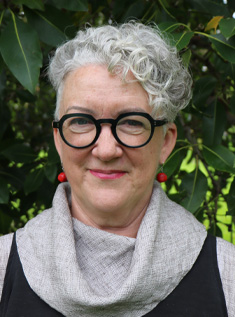
 Throughout my career, I have held leadership positions in male-dominated environments. I have on occasion been the only woman in the organisation’s leadership team and have had to deal with the view that women are ‘emotional’ leaders, and that this is a negative thing. I worked in and, for a short time, led the National Office for Women within the (then) Department of Families and Community Services. Today, I am honoured to be the Executive Director at the Australian Institute for Disaster Resilience (AIDR).
Throughout my career, I have held leadership positions in male-dominated environments. I have on occasion been the only woman in the organisation’s leadership team and have had to deal with the view that women are ‘emotional’ leaders, and that this is a negative thing. I worked in and, for a short time, led the National Office for Women within the (then) Department of Families and Community Services. Today, I am honoured to be the Executive Director at the Australian Institute for Disaster Resilience (AIDR).
Throughout my working life I have learnt that advocating for gender equality provides benefits to individuals, organisations, communities and regions. There are many sources of evidence of the value of gender equality, including the Global Gender Gap Report that states that gender equality is not only a fundamental human right, but is linked to a country’s overall economic performance.1 It is also the case that in the work of disaster risk reduction and resilience, gender and disaster risk are inextricably linked. The United Nations Office for Disaster Risk Reduction states that the climate crisis is not gender neutral, and that gender inequality coupled with the climate crisis is one of the greatest challenges of our time.2 As with other marginalised groups, women are less likely to survive and more likely to be injured when disaster strikes, and they face increased risks of family violence during and after disasters.3 And yet, alongside the increased effects, is increased action by women in recovery and resilience at the community level.
In Australia, we are seeing natural hazards and extreme events such as bushfire and floods becoming more frequent and intense. Globally, the number of disaster events is projected to reach 560 a year by 2030, equating to an average of 1.5 disasters a day.4 Each of these events will affect different communities, comprised of different people, who have different needs and strengths. Understanding, accepting and advocating for diversity in these communities supports inclusive and effective responses.
Gender diversity, of course, extends beyond the gender binary to include LGBTIQA+ people, and so too does the focus of this edition of the Australian Journal of Emergency Management. Intersectional factors, such as cultural background, disability, and socioeconomic status, all influence how a disaster is experienced. Thus, this edition includes articles that highlight inclusion and diversity more broadly, and we hope this body of knowledge supports practitioners to consider the diversity of people in a future of increasingly intense and frequent disasters.
A recurring theme throughout this edition is the value of inclusive disaster preparedness and planning. Supporting women to be participants and leaders can be a positive influence for inclusive policies and practices for everyone. This vision is reflected in the Gender Action Plan to Support Implementation of the Sendai Framework for Disaster Risk Reduction 2015–2030 (Sendai GAP)5 that aims to substantially increase gender-responsive disaster risk reduction by 2030. Similarly, supporting all genders and other diverse groups in disaster risk reduction and resilience efforts is essential if we are to create positive outcomes for everyone.
To achieve significant risk reduction and to support thriving and resilient communities, we must interrogate the barriers to anyone’s participation and leadership in emergency management. This needs to be from the fire station to the community consultation table and from the local schools to the policy environment in the halls of government.
We at AIDR are proud to work alongside Gender and Disaster Australia (GADAus) to develop this special edition of the journal and encourage readers to continue to engage with their guidance, resources and training to reinforce a foundation of gender-inclusiveness in our approach to reducing disaster risk and strengthening the resilient communities we serve.


